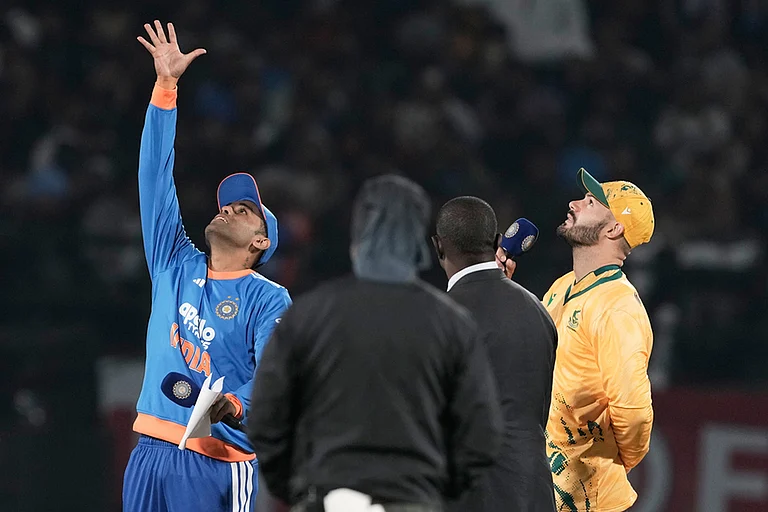The sky over Kohima was bright and sunny on that early spring afternoon in March, 1995. I was just a school-going boy then, but I still remember the horror that unfolded, as if it were just yesterday. The serenity of this picture-postcard capital was suddenly broken by staccato bursts of gunfire from automatic rifles, loud explosions from grenades and mortars launched by Indian Army personnel at unarmed civilians. We came to know only later that a vehicle’s tyre had burst on the road and the trigger-happy Army personnel had ‘retaliated’ with full might at the unarmed civilians going about their daily routine. Many died that day. Among them was a young girl, one of my relations, who was killed by an Army grenade that landed in her house. Her sister, not too old herself, was maimed for life. And their grandmother was severely wounded. The events had left the entire town numb with shock—fully armed Army personnel targeting children in broad daylight. Mistaken identity, was it?
The mortars and bullets continued to fly late into the night. Two mortar rounds landed on our concrete residence—the first shook the ground, the second shook the whole house. My family dashed to my neighbour’s house uphill for safety within the confines of their walls. Word had spread that the Army was carrying out door-to-door search, and not sparing anyone. With their history of killings, rape, and torture, young men and women were always in danger. As the sound of firing drew near, my family and other people of the locality—residential quarters of the forest department—decided to vacate their homes and slip into the jungle to escape the marauding troops. We packed our bags, utensils and ration, ready to slip out. I could hear my own heart pounding, and sensed the fear among the people. But luckily, the soldiers did not come our way. As the night progressed, the gunshots began to fade away. I lived to tell the story.
What surprised me most was the fact that the next morning, the entire town appeared to have forgotten the horrors of the previous night, as if nothing had happened. The Nagas as a community moved on, like they always do, packing and unpacking their lives and never wanting to mention the sheer atrocities they survived. In Kohima that day. Or other incidents of “mistaken identity”—in Mokokchung, Meluri, Oinam, and so many other places in the Northeast.
The ceasefire of 1997 between the Central government and Naga armed factions had changed the complexion of the cycle of violence in our lives. We had grown up hearing the sound of gun-fights. But now, they became internecine, as Naga militant factions started training their guns on each other. It became clear to us that the ‘war’ was here to stay; the sight of various Indian Army battalions patrolling civilian areas in full war camouflage became more frequent. Over the years, I have never felt at ease with any military man in olive green. They just remind me of the trauma, pain, loss, humiliation, and anger felt by generations of Nagas. I have often heard similar trauma recounted by Nagas, generations apart. Even then, I was wrongfully hopeful to think that for Nagaland and Nagas, the days of peace were not far away.
ALSO READ: Poetry | New Terror in Nagaland
On December 6, 2021—two days after the Oting incident—it was Union home minister Amit Shah, speaking in Hindi in Parliament, who justified the decades of suppression, humiliation, and torture inflicted on the Naga people; by saying that the murder of 14 villagers in broad daylight by the 21 Para Special Forces was a case “mistaken identity”, a story very different from what the grieving villagers of Oting narrate. For the record, the same unit was used in the 2015 “surgical strike” in Myanmar. The so-called national media completed the efforts to whitewash the incident, parroting the government line of “mistaken identity”, that the civilians were killed in a failed ambush laid for insurgents by the special force. Yes, in one way they are right. Nagas have been killed in thousands since 1958. And yes, security forces have been killed by insurgents. So shall we justify the decades of killings as “mistaken identity” too? That’s what it is for us Nagas—past, present and future. The lives of thousands of civilians snuffed out by security forces under the blanket of AFSPA since 1958. Just cases of mistaken identity.
A friend of mine, a resident of Delhi-NCR, asked me why I was so anguished about what happened in Nagaland? Why would I not be angry? The Indian Army was sent to the Naga Hills in 1954; from then on, they have only heaped torture, massacre, and the worst forms of human rights violations, possibly in an attempt to annihilate a people with their military might. I remember the stories I had heard as a child, told by my clan uncles and relatives, of resistance against the Indian Army. One such story was of an Indian Army officer, targeted for ordering a massacre of Nagas. The resistance of my fathers and forefathers has now become mine to carry forward. Why should I not be anguished, when justice has never been served? And every generation continues to face untold sufferings. I have every right to be angry.
We don’t need your apology, for we know it will never come. We don’t need your sympathy, for we know it will never come. We don’t need your opinions which make every one of us an insurgent, a terrorist, a militant, a rebel, a separatist. For we know your lies, for too long. Our forefathers fought the might of the British Empire in our land where the mountains touch the skies. Our fathers fought and survived World War II. But the world forgot about us. My people swore to defend our land, our women and our children from the olive shadows that you carried. Do you know how long a battle this has been for us?
Today, I realise I can’t give up, for how long will I continue to hear the same story. No, time can’t stop us, nor can your tanks, guns or missiles. You can burn our bodies and dump them in the deepest oceans. You can butcher our bodies into a thousand pieces, but from the ground, we will rise again. For you forget that you might have killed our bodies, but our spirits live. And we are not here to give up this time.
How, then, shall we live? Moba, a resident of Mon, has a thought. “We live in a region where administration and governance can’t be delivered by people living thousand miles away, by people who are ethnically and culturally alien and living within their walls, with a myopic view of the world. Because, governance is not a set of rules and laws but a relationship. A relationship is not possible with people who do not understand us.”
In my community, they say, even if a chicken goes missing, the whole community feels guilty and comes together to find it. How, then, shall we not grieve and anguish over the massacre of 14 human lives lost forever? In this part of the region, which is considered remote, it is not distance that has defined remoteness. That is defined by the coldness of the heart that mainland India continues to show. Its politicians are playing their Chanakya niti. The mainstream media is at the vanguard of promoting suppression of the Nagas. And the citizens of mainland India are rarely ever concerned about the lies spun around outlandish tales of “mistaken identity”. Be it in Oting, or elsewhere in the Northeast, or in Kashmir.
Why are you not anguished yet?
(This appeared in the print edition as "Why Aren’t You Grieving?")
(Views expressed are personal)
ALSO READ
Riathung Ngullie is a student of social work at loyola college, chennai. he has been working in areas of conflict and peacebuilding






















